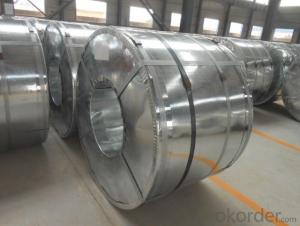Reinforcing steel, often known as rebar, plays a crucial role in modern construction projects. It’s the backbone that gives concrete its strength and resilience. But with so many sizes and types available, choosing the right one for your project can be a daunting task. In this article, we’ll explore the various options and help you make an informed decision.
Why Reinforcing Steel Matters
Reinforcing steel is essential for providing tensile strength to concrete structures. Without it, concrete would be susceptible to cracking and breaking under stress. Reinforcing steel works by counteracting the tensile forces that concrete can’t handle on its own, creating a strong and durable structure.
The Importance of Choosing the Right Size
When it comes to reinforcing steel, size does matter. The size of the rebar you choose will depend on several factors, including the load your structure needs to support, the span of the concrete element, and the environmental conditions it will be exposed to.
A Guide to Common Reinforcing Steel Sizes
Reinforcing steel comes in a variety of standard sizes, measured in millimeters. The most common sizes are 3, 4, 5, 6, 7, and 8, with each size corresponding to a specific diameter. For example, a 3 rebar has a diameter of 9 millimeters, while a 8 rebar has a diameter of 25 millimeters.
3 Rebar: The Smallest, but Mighty
Don’t let the small size of 3 rebar fool you. It’s often used for residential construction, such as in concrete slabs and footings. Despite its small diameter, it can provide significant strength to your project.
4 Rebar: A Popular Choice
The 4 rebar is a favorite among contractors and builders. With a diameter of 12 millimeters, it offers a good balance of strength and flexibility, making it suitable for a wide range of applications, from concrete walls to bridge decks.
5 Rebar: For Medium-Sized Projects
The 5 rebar, with a diameter of 16 millimeters, is ideal for medium-sized projects that require a bit more strength than what 4 rebar can provide. It’s commonly used in commercial construction and for reinforcing concrete beams and columns.
6 Rebar: A Step Up in Strength
For projects that demand even greater strength, the 6 rebar is a popular choice. With a diameter of 19 millimeters, it’s often used in heavy-duty applications, such as large bridges and high-rise buildings.
7 and 8 Rebar: For the Big Leagues
When it comes to massive structures, the 7 and 8 rebar sizes are the go-to options. With diameters of 22 and 25 millimeters respectively, they provide the ultimate support for the largest and most demanding projects.
Considerations for Selecting Reinforcing Steel
Beyond just the size, there are other factors to consider when selecting reinforcing steel for your project. These include:
1. Material Quality: Ensure the rebar meets industry standards for strength and durability.
2. Cost: Larger rebar sizes may be more expensive, so consider your budget when making a selection.
3. Availability: Some sizes may be more readily available than others, depending on your location and the scale of your project.
4. Handling and Installation: Larger rebar sizes can be more difficult to handle and install, so consider the logistics of your project.
5. Aesthetics: While not the primary concern, the appearance of the rebar can be a factor, especially in projects where it will be visible.
The Human Touch in Construction
While we’ve focused on the technical aspects of reinforcing steel, it’s important to remember that construction is as much an art as it is a science. The choice of rebar size can impact not only the structural integrity of your project but also its visual appeal and the overall experience of the people who will interact with it.
In Conclusion
Choosing the right reinforcing steel size for your project is a critical decision that requires careful consideration of various factors. By understanding the options available and the implications of each, you can ensure that your construction project is both strong and beautiful. Remember, the right rebar size can make all the difference in the success of your project.

